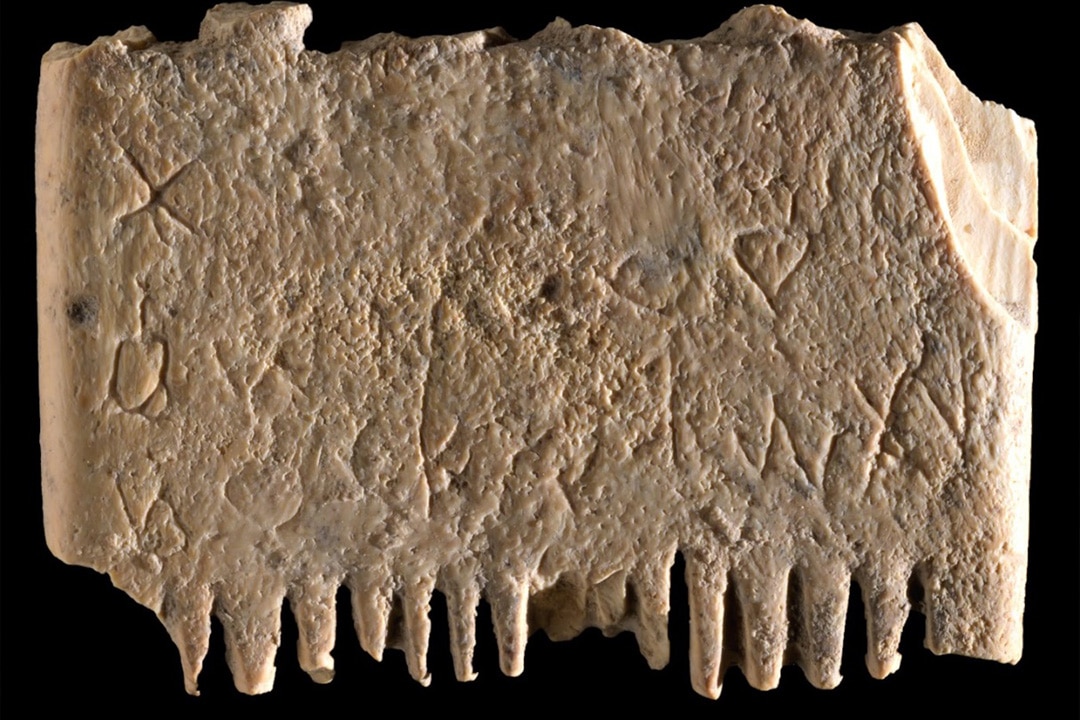Create a free profile to get unlimited access to exclusive videos, sweepstakes, and more!
'Root out the lice!' Ancient ivory comb contains oldest written Canaanite sentence
We invented writing and then immediately turned it against bugs we didn't like.

In the popular game show 25 Words or Less (now streaming on Peacock!), and the board game of the same name, contestants compete to communicate five target words to their teammates using as few clue words as possible. It’s challenging because we’re so used to casting words freely into the world, with the whole of human language at our disposal. Even written language feels infinite and instantly translated from thought into ink or electrons, but that wasn’t always the case. When writing first emerged, it had to be carved into wood or stone, bones or ivory. Every letter had a cost measured in energy, expertise, and material. Words were necessarily limited.
Around 1,800 BC, the written form of the Canaanite language was emerging in what is now Israel, but words were few and far between. Archaeologists have uncovered 10 instances of writing from Tel Lachish, a major Canaanite city state active in the second millennium BC, but all of them included only two or three words and tended to indicate ownership or dedication of an item. Now, scientists from the Hebrew University of Jerusalem and Southern Adventist University have discovered the first complete sentence ever written in the Canaanite language, carved into the side of a hair comb. The discovery was announced in a recent paper published in the Jerusalem journal of Archaeology.
The comb was first uncovered in Tel Lachish back in 2017, but the writing wasn’t discovered until this year, during post-processing by researchers. The comb dates to 1,700 BC and measures roughly 3.5 by 2.5 centimeters, carved from a single piece of ivory. On one side, there is an inscription made of 17 Canaanite letters. The inscription translates to, “May this [ivory] tusk root out the lice of the hair and the beard.”
The teeth of the comb have all been broken off near the base over the thousands of years between its creation and today, but enough of the bases remain for scientists to reconstruct how the comb was used. One side had six thick teeth, which researchers believe were used to detangle knots in the hair and beard. The other side had 14 fine teeth which were used to remove lice and eggs. That was confirmed by the discovery of deceased lice and eggs on the comb itself. The environmental conditions were such that the lice themselves weren’t preserved, but their hard outer casings were.
In addition to helping researchers fill in gaps in written Canaanite and the evolution of written language at large, the very existence of the comb also tells us something about the way Canaanites lived. Combs from this time period were often made from wood or bone, but ivory was rare and expensive. That’s because there were no elephants in Canaan at the time and ivory was probably imported from nearby Egypt. This was no ordinary comb even at the time of its creation, it was a luxury item. That suggests that the comb’s owner was a wealthy individual. Their money could buy fancy things, but not even wealth could save them from the scourge of head lice, no matter how fancy the comb is.
It might have been valued highly at the time, but its value to the world is even greater now. Researchers noted that the features of the letters in the inscription are consistent with the earliest stage following the invention of the alphabet. That very same alphabet would then propagate throughout most of the rest of the world, resulting in modern scripts used in Hebrew, English, Russian, and much of the rest of the Western world. Every novel, every journal entry, and every tweet you’ve ever read or written traces its roots back to this ivory comb and a desire to get mites out of your beard. How wide ranging the consequences for so small a thing.


























